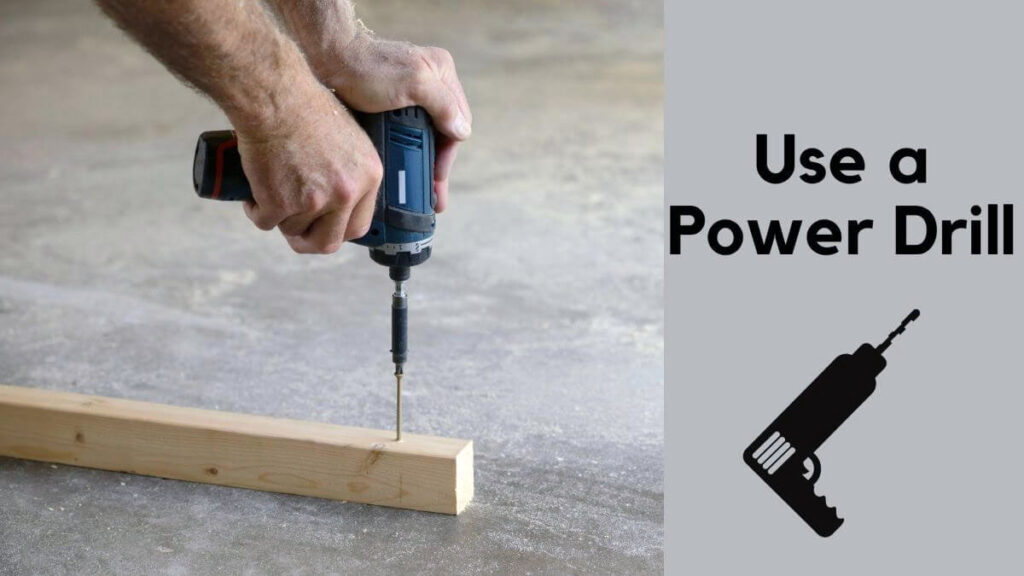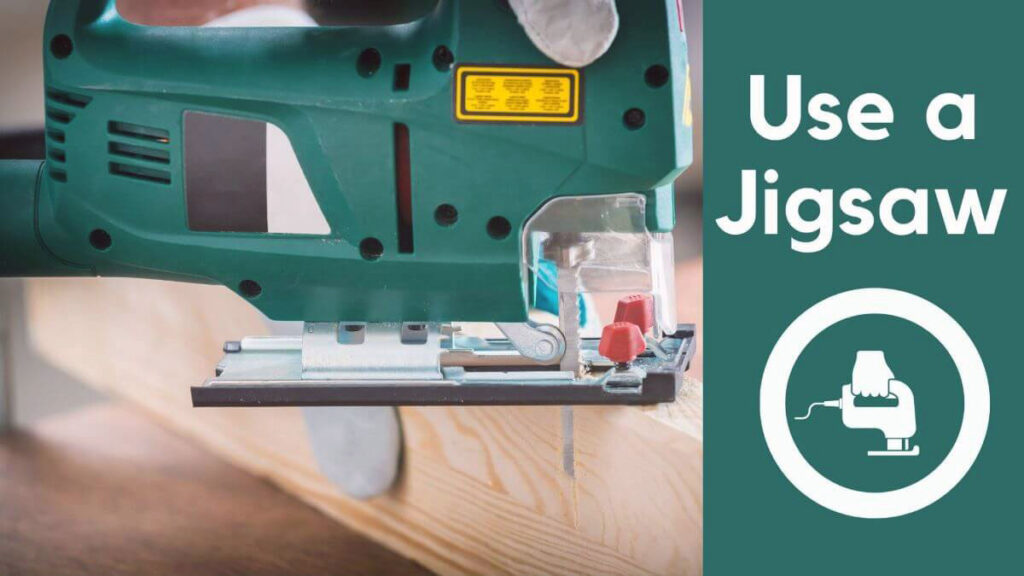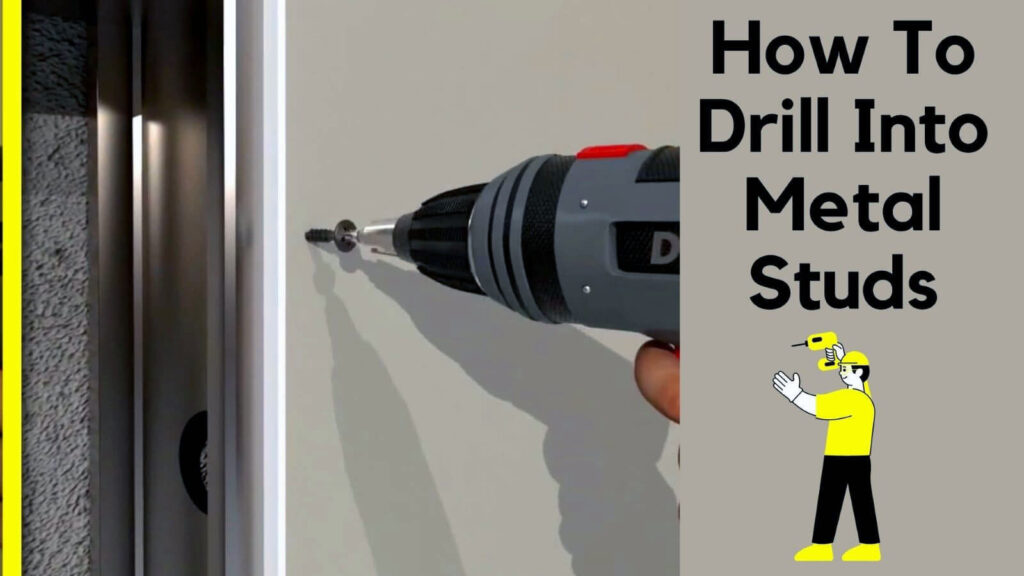Metal studs are a popular choice for building walls and ceilings because they are solid and fire-resistant.
Drilling into metal studs can be tricky because they are more complex than wood studs. But with the right tools and techniques, you can do it quickly and easily.
Due to their high resilience, durability, and cost-effectiveness, metal studs have gained popularity in new residential and commercial construction projects.
When you want to drill into a metal stud, there are a few things you need to keep in mind. This post will show you how to drill into metal studs.
Table of Contents
What are Metal Studs?
Metal studs are a type of structural member that is used in buildings and other structures. They are also used in vehicles, appliances, and other objects. Metal studs are made from various metals, including steel, aluminium, and copper.
Metal studs are inserted into the ground or other structural members to support the object’s weight. They are also used to attach things to the structural members.
Metal studs are usually inserted into a hole that has been drilled into the ground or other structural member. The fix is then filled with concrete or another type of filler material.
You can insert metal studs into a variety of types of holes. Metal studs are usually inserted into holes that are 1 inch in diameter.
What are Some of the Best Tools For Drilling into Metal Studs?
There are a few different drills that can be used to drill into metal studs. The most common type of drill is the cordless drill. Cordless drills are great because they do not require a power cord and are lightweight.
Another type of drill that you can use to drill into metal studs is the hammer drill. Hammer drills are great because they are powerful and can guide through hard materials.
- Drills
- Jigs
- Saws
- Nailguns
- Hammers
Check Also: Homeowner’s Guide To The Best Drill For Concrete Walls!
What is the Best Way to Drill into a Metal Stud Step by Step?
Step1: Choose the Location of the Studs in the Wall.
When drilling into metal studs, carefully choosing the studs’ location in the wall is essential. By doing so, you can avoid damaging the wall and ensure that your drilling is accurate.
Step2: Mark the Location of the Studs with a Pencil or a Piece of Paper.
Before you start drilling into the metal studs, you’ll need to mark the location of the studs with a pencil or a piece of paper. This will help you avoid hitting any of the other metal parts of the wall with your drill bit.
Step3: Use a drill to make a hole in the wall just above the marked studs.
If you want to drill into metal studs, you’ll need to use a drill bit specifically designed for the task. You’ll also want to ensure that the drill bit is the correct size for the studs. Once you have all the necessary supplies, it’s time to get to work:
- Identify the studs in the wall.
- Use a level to ensure that the hole you are drilling is level.
- Use the drill bit to start digging into the studs.
Be sure to use a steady hand and slow speed to don’t damage the wall or the studs.
Step4: Hang a String from the Top of the Drill Bit to the Bottom of the Hole.
When drilling into metal studs, it is essential to ensure that the bit is centered in the hole and that the string is tight. To do this, you will need to hang a line from the top of the drill bit to the bottom of the hole. This will ensure that the bit remains centered and the string holds it in place.
Step5: Use a Power Drill.

Another option is to use a hole saw. This tool is similar to a standard drill bit but has a circular saw blade on end. You can use this to cut a hole into the metal stud, then use the drill bit to drill through the hole.
Step6: Use a Jigsaw.

If you have to drill into metal studs, the last option is to use a jigsaw. This tool has a blade that is shaped like a saw. You must be very careful when using this tool because the knife is very sharp.
This very sharp tool is perfect for drilling into metal studs. The blade is solid, so you don’t have to worry about getting injured while drilling into metal studs.
Step7: Push the Stud Out of the Way and Hang the Light Fixture or Other Object from the String.
If you’re trying to hang a light fixture from a string, you’ll first need to push the stud out of the way. Use a hammer and a screwdriver to pry it out gently.
Once the stud is out of the way, use a drill to make a hole in the metal just large enough for the string to fit through. Thread the line through the hole and tie it off in a knot.
Check Also: How To Drill Marble Without Cracking
What are the Precautions You Should Take When Drilling into Metal Studs?
When drilling into metal studs, there are a few precautions that you should take to ensure that the drill bit doesn’t slip and cause damage.
First, make sure that the bit is sharp and adequately lubricated.
Second, use a drill bit that is the correct size for the hole you are drilling.
Finally, keep a close eye on the hole you are drilling and make sure that it doesn’t become too deep. If it does, stop the drill bit and fix the problem before continuing.
Here Are Some Important Reasons:
1. Always wear safety goggles and a dust mask when drilling into metal studs.
2. Make sure the drill bit is sized correctly for the metal studs.
3. Use a drill bit that is specifically designed for metal studs.
4. Use a slow speed when drilling into metal studs to prevent damage.
5. Use a jigsaw to cut away any excess metal before drilling into the studs again.
What are Some of the Common Mistakes People Make When Drilling into Metal Studs?
1. Not using the right drill bit
2. Not using the correct speed
3. Not using enough pressure
4. Not keeping a close eye on the drill bit
How Can You Prevent These Mistakes?
Drilling metal studs is a common task, but it’s essential to do it correctly to prevent mistakes. Here are four tips to make sure your drilling goes smoothly:
1. Make sure the bit is the right size for the stud.
2. Use a drill bit that is specifically designed for drilling metal.
3. Use a steady, consistent motion while drilling.
4. Keep a close eye on the hole you’re creating, and stop drilling when it’s close to the edge of the stud.
Read More: Drill into Plexiglass Without Cracking
What is the Advantage of Using Metal Studs?
- They are solid and durable.
- They can withstand a lot of stress and pressure.
- They are easy to install.
- They are affordable.
What is the Disadvantage of Using Metal Studs?
- They are challenging to work on. Cutting, bending, and structuring all take considerable effort.
- It is nearly impossible to make last-minute dimension changes when working with metal studs.
- Screwing or tapping is a challenging task.
- It has a significant disadvantage in terms of sound echoes.
- Thermal insulation is inadequate when metal studs are used.
FAQs About How To Drill Into Metal Studs
Is it possible to use my Phone as a stud finder?
Yes! You can locate a stud using your Phone. Various applications make use of the iPhone’s built-in magnetometer to locate studs. While they are not foolproof, they can be effective when appropriately used.
Is it possible to drill through metal with a cordless drill?
Yes! You can use a cordless drill to drill into metal. All you have to do is choose the appropriate drill bit material, primarily cobalt or titanium. Due to mechanical gears, cordless drills now have the same power as a wired drills.
How deep should a screw be inserted into a stud?
A screw should penetrate the stud by approximately two-thirds of its length for optimal results. This also depends on the required strength and the stud thickness.
Final Opinion
Metal studs are a popular choice for many homeowners and businesses because of their many benefits. But before you can enjoy these benefits, you need to know how to drill into metal studs.
This article will cover everything you need to know about drilling into metal studs, from what they are to how you can do it safely and efficiently.

Hey, I am Shihab Uddin, I’m a huge fan of DIY crafts. My workshop is where I spend most of my spare time, and I’m always working on some project. To that end, I’d like to share some of my knowledge and experience with you in power tools, woodworking, and other specialized materials fabrication.
I will guide you with genuine knowledge that can assist you with deciding whether a drill is appropriate according to your requirements or not. If you want to find the best drill and know which type of drill is most suited for your needs, then I can guide you with my expertise. My passion lies in helping others find the correct products they need at an affordable price.


